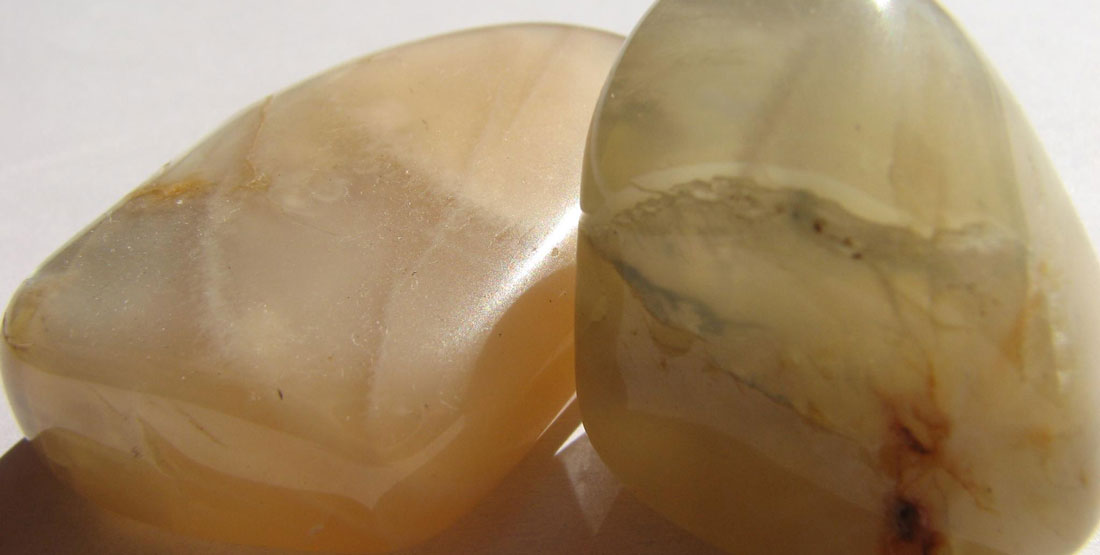June: Month of Moonstone
History of moonstone
Moonstone is a form of the mineral oligoclase feldspar. Moonstone's name comes from the fact that its shiny iridescent and refractive properties resemble the glowing moon. Moonstone (also called sunstone) can be blue-white or peach in color. Ancient peoples believed that the stone had mystical properties and could help with spiritual awareness. Some even believed that wearing this stone could cause invisibility for the wearer.
Science of moonstone
The strange light-refractive qualities of moonstone are caused by lamellar intergrowths inside the crystal. These structures form from layers caused by chemicals responding to hot and cold temperatures differently. When light enters the stone, it is bounced back and forth between these layers before it exits as the glowing moon-like effect we see.

